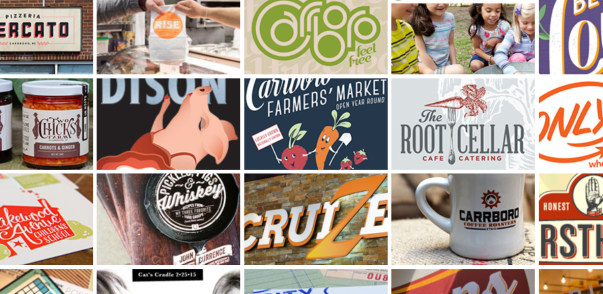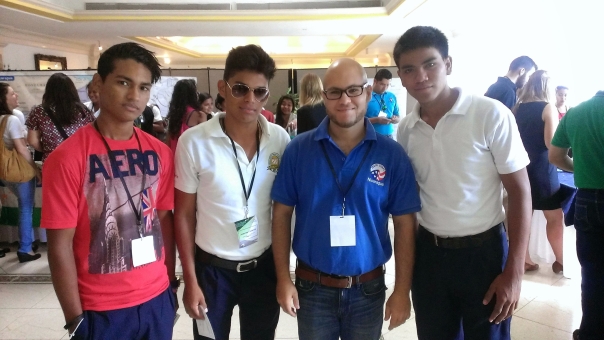Think back forty years to how businesses used to operate and grow. Someone would cook up a good idea for a product. A company would be formed around that idea to manufacturer it, warehouse it, and then distribute it. Supporting these functions were a sales, marketing, and finance workforce. If you invented something, you then had to get machinery to manufacture it and hire a sales force to get it into the hands of customers. There were few other options.
Since then, businesses have evolved considerably. If someone has a good idea for a product they design it and market it. That’s it. Manufacturing is outsourced, often offshore. Sales are facilitated through e-commerce marketplaces. Fewer and fewer companies are bothering to have their very own websites, let alone a brick-and-mortar store. Logistics are handled by third-party logistics providers. Going asset-lite is the way to go. That lets you rapidly scale scale scale if you want to.
The other side of the coin is the companies that are providing all of these support functions. Since they have to own the assets – whether they be warehouses, vehicles, servers, machines, or financial capital, they have an incentive to be very large companies. Scale is their friend. In fact, it is imperative for success.
What has emerged is a dumbbell economy: On one side, you have many small weights that all add up to a hefty load of economic activity. There is a bar connecting these weights to the other side, which is comprised of a few heavy weights. Summed together, the few heavy weights equal the weight of the smaller weights on the other side, but there are far fewer heavy weights than there are small ones.
The dumbbell economy can be best illustrated through these two graphs. While companies with 1,000 or more employees make up just 0.21% of all companies in the United States, nearly 40% of all privately employed workers in the United States work for one of these companies.
I’m not the only person to have made this observation about the shape of the economy. The Economist reported on it in 2016. Deutsche Bank also wrote a report on the matter.
In this dumbbell economy, the few heavy weights represent large service corporations that provide services and other knowledge-economy goods to other companies. These include Microsoft, Dell, IBM, Amazon, the Big 4 accounting firms, UPS and FedEx, Google, Maersk, Delta, Caterpillar, John Deere, and Salesforce.com. The many smaller weights represent small and medium businesses. These include mom and pops and specialty stores, but they are not only brick and mortar. Growing online brands, artists, and many other private companies are on the lightweight side of the economic dumbbell. To complete the metaphor, the bar connecting the two sides of weights represents infrastructure. Roads, airports, cables, and public utilities, which are essential for commerce to be able to function. Government is the arm that curls the dumbbell and makes it move. If the government is not exercising then iron won’t get pumped – the economy will not function properly and grow.
The heavyweight companies invest in assets and then sell them as a service to the lightweights. Without the heavyweights, the lightweights would not be able to grow as fast and expand their reach as wide. The most successful heavyweights are those that are most valuable to the lightweights. Those that can help the smaller, growing companies the most while pinching the lightweights’ bank accounts the least will find themselves with the most demand, as well as investors willing to provide cash to allow them to invest and grow.
While the dumbbell is a useful analogy to understand this phenomenon, I think that it is most appropriate to call this one-to-many. One company can support activity for many others.
It may be best to provide a hypothetical example. For the sake of illustrating my point, I will bold all of the heavyweight companies that I mention in my narrative:
Imagine that I am an engineer, and with the assistance of Autodesk design software I invent a great new device that I want to start selling. I’ve drummed up a lot of support for my nascent product by creating an Instagram account for the device, but I do not have any capital to start production, so I start a crowdfunding campaign on Indiegogo. I raise enough money to begin production, and I hire a contract manufacturer in Asia to begin batch producing the device. I pay FedEx as my freight forwarder to get the batches from Asia to the United States, where I will offer the device for sale. My primary sales channel is Amazon.com, although I store the units in my home and ship them upon receiving an order using UPS and the US Postal Service.
I do have a website which is hosted by GoDaddy.com. It’s basically just a landing page for people who find the device through Indiegogo. It forwards them to the Amazon product page so they can make purchases. However, as sales continue to grow, I continue to design, and support grows for my ideas, I raise some additional money from a venture capital firm. With this money, I hire some employees, and we move into an old industrial area in my city that has been repurposed as a business campus. It’s perfect for my small business that needs a lot of space for industrial design work.
As we launch new products and have a steadier flow of inventory crossing the ocean from Asia, we make a concerted effort to strengthen our brand and diversify our sales channels away from Amazon.com. We build out our website and hire a third-party logistics provider to warehouse our inventory. We want to be able to take orders online and receive payments so we pay for some third-party software plugins and also work with Paypal. We also use some third-party digital marketing software services and pay for adds on websites like Google and Facebook.
The beauty of the one-to-many economy is that it allows new ideas for products and services to be born, grow, and be distributed to consumers who find them appealing and valuable. The problem, some may say, is that we continue to feed the “heavyweights” and cede more and more economic power to them as a result.
One-to-many supports a vast number of growing small and medium businesses, but it also necessitates the existence of a few large third-party providers – the heavyweights. Many people dislike the control of these large companies. In the wake of Amazon’s acquisition of Whole Foods some people said that there were anti-trust concerns. Goldman Sachs has been described as rather tentacular. The EU just slammed Google with a multi-billion Euro fine.
“[Goldman Sachs is a] great vampire squid wrapped around the face of humanity, relentlessly jamming its blood funnel into anything that smells like money.”Matt Taibbi, “The Great American Bubble Machine,” Rolling Stone, July 9-23, 2009
To ease some of the discomfort that we have with the heavyweights having more and more control over the economy, we have to think about ways that we can leverage the one-to-many economy to nurture the economic activity that we most value. Use the heavyweights to make the lightweights as attractive as possible.
What exactly are the elements of capitalism that we value, particularly in the United States?
- Creativity and art
- Entrepreneurship (and equality of opportunity)
- Diversity and inclusion
- Equality
- Innovation
- Distribution of income and wealth
- Family business
- Sustainability
- Poverty alleviation
The heavyweights need to proactively ensure that they are not hindering the attainment of any of these values. They may also go a long way in earning widespread public support if they are proactively supporting these values. Aligning themselves with these values may also strengthen their businesses. However, just creating a foundation and donating to community causes is not enough when it comes to the heavyweights. Their core business functions need to keep these values in mind.
My hypothesis here is far from original. Michael Porter, Harvard professor of Porter’s five forces fame, called this concept, “creating shared value,” in his 2011 HBR article with Mark Kramer. I’ve simply contextualized it here using some new data and appended my proposals to the “shared value” idea.
Here are some examples of companies that I think are going a good job:

Autodesk, which creates and sells software for design (AutoCAD is one of their hallmark products, but they have countless other programs which are used in 3D design and printing, animation, architecture, and more fields), has heavily invested in education (primary through university), entrepreneurship, sustainability, and medical innovation. Students, entrepreneurs, and teachers actually receive free access to Autodesk software. They figure that by advancing these fields they will build goodwill, train practitioners that will in the future become loyal customers, and the company may even position itself to capture a lot of business in emerging fields, such as Internet of Things and augmented reality/virtual reality.
UPS has gone one step further and has come up with a way to help the customers of their customers. Rio Grande (whose parent company is Berkshire Hathaway) is a manufacturer of speciality jewelry equipment. They ship with UPS. This year, Rio Grande created a membership program for their customers called Rio Pro. UPS became a partner with Rio Pro and offers discounted shipping services to Rio Pro members. In this relationship structure, everyone wins. Rio Grande’s customers are pleased because they get access to discounted shipping. Rio Grande wins because their customers are more satisfied and more successful. UPS wins by bolstering its relationship with Rio Grande as well as building a trusted relationship with a number of growing small businesses.

DHL, one of UPS’s main competitors, particularly outside of the United States, is creating an online marketplace for brick and mortar retailers in its headquarters city of Bonn, Germany. The marketplace is called Allyouneedcity, and I highly doubt that DHL is doing this just altruistically. They certainly hope that it will help support the retailers, but it also opens up opportunities for them. For example, they could use this marketplace to launch a pilot of same-day delivery, or they could expand the marketplace to compete with increasingly powerful e-retailers and expand DHL’s own revenue channels.
Amazon launched an interesting program this year, in which families on government assistance (SNAP and TANF) can receive a discounted membership to Amazon Prime. Prime is a large sales channel for retailers selling on Amazon’s marketplace (third-party e-commerce sales are actually growing faster than traditional e-commerce), so this will give those retailers more access to lower-income earners. On the face of things it might just seem like Amazon is shooting across the bow of Walmart, or even that they are trying to exploit lower-income individuals. With Amazon forging more and more into e-groceries, different kinds of merchandise, and value-added services, this discounted Prime service may actually improve access of lower-income individuals to products that they need for their health, nutrition, well-being, and income generating activities. Access, particularly in areas known as “food deserts” where there are no nearby grocery stores, is a serious problem for lower-income individuals. Amazon’s new service may be beneficial to its bottom line and help its customers as well.
In my opinion, Facebook may be the heavyweight that is most struggling with its vaunted position. It grew to prominence by facilitating a kind of social interaction that had never been conducted before. However, these sharings are increasingly being pushed to other platforms in the Facebook ecosystem, such as Messenger, Instagram, and WhatsApp. That’s left Facebook with a free speech billboard. At its most benign, people would say that Facebook is just a dumping ground for useless videos, blurry photos, and pitiful updates on people’s lives. At its worst, it’s a hate-littered echo chamber that is being used to manipulate people into believing things that are patently false.
Facebook is far from doomed. It remains a very successful company, and I believe that it offers a lot of value to society, despites the criticisms. However, to remain relevant, it needs to start focusing more on economic values. For instance, I could imagine Facebook launching an AI assistant (a la Siri or Alexa – it’s so in vogue these days) that focuses on social connections (I’m partial to the name Joffrey, but that’s up to Mark).
“Joffrey … when was the last time I talked to George?’
“It’s been six years since you last heard from George. Would you like to contact him now?”
“No, that’s alright, he’s probably busy.”
Meanwhile, in George’s house:
“George, I see it’s been awhile since you spoke with your friend. Would you like to contact her?”
“Yes, I would.”
“How would you like to contact her?”
“By e-mail.”
“Would you like a summary of your friend’s activity since the last time you spoke to her before we write an e-mail?”
“Yes I would Joffrey.”
There are various permutations of how Joffrey could facilitate meaningful interpersonal interactions around the world, and help with networking, friendships, tourism, mental health, and education. Facebook would benefit as well, because the more activity that takes place within their network, the more opportunities it has to monetize the activity.
There are countless more examples of how heavyweights can focus on economic values. Imagine if AT&T offered a comprehensive telecommunication plan for refugees arriving to the United States. Even more so, they could offer a special plan to refugees starting new businesses. AT&T would make great strides in facilitating communal integration for some of the neediest people in the world and helping them become successful members of society. If AT&T could expand this plan to include additional social support services, educational and NGO partners, as well as language assistance (Rosetta Stone or DuoLingo) then even more value could be created, and at little additional cost to AT&T (I only choose AT&T because it is one of the largest telecommunication companies in the country).
In coming years, one-to-one many businesses will continue to not only shape, but shake markets. Much has been said about the impending doom of brick-and-mortar retail. However, emergent one-to-many type companies are already nipping at the heels of e-retail juggernauts like Amazon. Instagram, owned by Facebook, has a retail team. Their goal is to let users make purchases without ever leaving the app. Amazon has already taken steps to respond to this emerging threat by introducing Spark, its own social media platform for product discovery.
Even being an established one-to-many titan for many years no longer guarantees the continuation of a business model.
For instance, banks
, credit card companies, and other financial one-to-many companies need to make plans to integrate with these the new heavyweights of commerce or they may find themselves cut off from what were once reliable and steady revenue streams. Other one-to-many companies can partner up behind your back and uproot your market position. UPS and FedEx should heed this warning and consider new one-to-many retail patterns. Transportation and logistics upstarts, such as Uber RUSH and Deliv (which, granted, UPS has invested in) are already directly integrating with large retailers as well as payment processing companies such as Clover.
As one-to-many companies begin to support more and more smaller businesses, and the connections among firms become more and more complex, I begin to see the economy less traditionally, with individual companies making one-off transactions of goods or services. Instead, I see an economic mesh. Every transaction is distributed among many different firms in the economy, and these transaction could not be successfully completed without all of the firms working together. The heavyweights may continue to grow, and some people may get very rich as a result, but so long as they are supporting opportunity for millions of other people and in-line with our economic values then it is a win-win outcome.
Joffrey: “Catelyn, I noticed that your sister Lisa just posted a photo on Instagram from near you. Would you like to send her a message?”
Catelyn: “No Joffrey, that’s ok, thank you.”
 Servicization focuses on what consumers really want: the function. Instead of selling washing machines, Whirlpool could sell clothes washing as a service. The company could install washing machines in consumers’ homes and charge consumers based on how much they use the machine. The machine could have an attached smart meter that transmits the number of washes back to Whirlpool. The company would send you a monthly bill, just like your electric utility. Whirlpool, remaining the owner of the machine and simply the purveyor of a service, would be responsible for maintenance and would have an incentive for the machines to be reliable. After all, they would not get paid if the machines break down and the consumers can not wash their clothes.
Servicization focuses on what consumers really want: the function. Instead of selling washing machines, Whirlpool could sell clothes washing as a service. The company could install washing machines in consumers’ homes and charge consumers based on how much they use the machine. The machine could have an attached smart meter that transmits the number of washes back to Whirlpool. The company would send you a monthly bill, just like your electric utility. Whirlpool, remaining the owner of the machine and simply the purveyor of a service, would be responsible for maintenance and would have an incentive for the machines to be reliable. After all, they would not get paid if the machines break down and the consumers can not wash their clothes.


 Honeysuckle and the farm are owned by EastWest Organics, a farm management company that owns or leases 227 acres of farmland and food producing forest land in Orange County, NC. They produce agricultural products that are used in beverages, such as berries, nuts, tea leaves, and honey.
Honeysuckle and the farm are owned by EastWest Organics, a farm management company that owns or leases 227 acres of farmland and food producing forest land in Orange County, NC. They produce agricultural products that are used in beverages, such as berries, nuts, tea leaves, and honey.









 The number of large corporations that Bee Downtown works with is remarkable. Just in the Research Triangle area they have hives at IBM, SAS, Murphy’s Naturals, North Carolina State University, and even Burt’s Bees. Although many of its customers are large companies, it partners with other local companies as well. They have designed t-shirts with Durham, NC-based apparel company Runaway. Local companies that sponsor hives can also take the honey they collect and sell it under their own brand name (as Runaway has done).
The number of large corporations that Bee Downtown works with is remarkable. Just in the Research Triangle area they have hives at IBM, SAS, Murphy’s Naturals, North Carolina State University, and even Burt’s Bees. Although many of its customers are large companies, it partners with other local companies as well. They have designed t-shirts with Durham, NC-based apparel company Runaway. Local companies that sponsor hives can also take the honey they collect and sell it under their own brand name (as Runaway has done). All of these interconnected activities also create educational opportunities. The various entities offer educational programs as well as have spaces for formal or informal educational events. Bee Downtown educates its corporate clients about the importance of bees to the world, and they also host school groups at the arboretum. The arboretum doubles as an educational and research laboratory, given the array of species that it houses. Honeysuckle’s beverages educate consumers about agricultural practices and beverages and wellness. Furthermore, the agritourism promoted by Honeysuckle Tea House, the arboretum, and Bee Downtown grow interest in conservation and agribusiness, and all of these entities offer internships and other practical experiences for students from all of the local universities.
All of these interconnected activities also create educational opportunities. The various entities offer educational programs as well as have spaces for formal or informal educational events. Bee Downtown educates its corporate clients about the importance of bees to the world, and they also host school groups at the arboretum. The arboretum doubles as an educational and research laboratory, given the array of species that it houses. Honeysuckle’s beverages educate consumers about agricultural practices and beverages and wellness. Furthermore, the agritourism promoted by Honeysuckle Tea House, the arboretum, and Bee Downtown grow interest in conservation and agribusiness, and all of these entities offer internships and other practical experiences for students from all of the local universities. Strong local economic ecosystems also enhance service companies, and tech and platform companies. Many of the logos above were designed by a local creative agency called The Splinter Group. ROMR, a local tech company that allows individuals to book recreational access to private land (kind of like the AirBnB for conservation), has the Honeysuckle farm and the Keith Arboretum on its platform. However, these local economic ecosystems also rely on
Strong local economic ecosystems also enhance service companies, and tech and platform companies. Many of the logos above were designed by a local creative agency called The Splinter Group. ROMR, a local tech company that allows individuals to book recreational access to private land (kind of like the AirBnB for conservation), has the Honeysuckle farm and the Keith Arboretum on its platform. However, these local economic ecosystems also rely on 
 Over my years (well, year and a half) at business school, I’ve been asked a handful of times, in formal interviews and informal settings, who my favorite entrepreneur is. I didn’t have an answer. However, over the last few months I’ve become increasingly impressed by David Chang. I’m now prepared to formally declare him my favorite entrepreneur.
Over my years (well, year and a half) at business school, I’ve been asked a handful of times, in formal interviews and informal settings, who my favorite entrepreneur is. I didn’t have an answer. However, over the last few months I’ve become increasingly impressed by David Chang. I’m now prepared to formally declare him my favorite entrepreneur.




